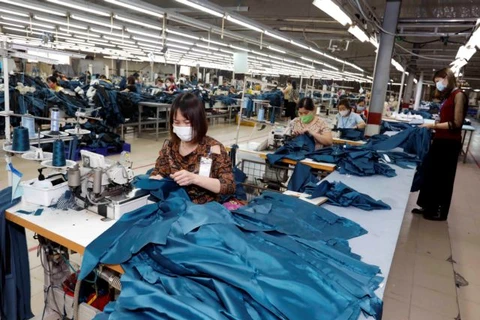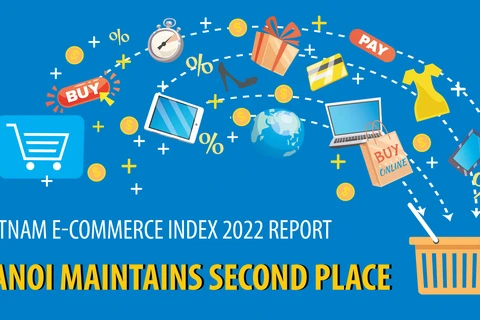Hanoi (VNA) – “What’s Next in E-Commerce”, the latest e-commerce trend report commissioned by FedEx Express, showed that small and medium-sized enterprises (SMEs) and consumers alike forecast significant growth in e-commerce.
The study, conducted in July, surveyed SMEs and consumers in 11 key markets in the Asia Pacific, Middle East and Africa (AMEA) region to examine the development of e-commerce in the region and identify the trends that can boost growth in the future.
It revealed that Vietnam takes the lead in the Asia-Pacific in terms of e-commerce positivity, with 94% of SMEs and 87% of consumers believe that the future of this sector holds numerous opportunities to be explored and develop.
Consumers are expecting innovations in personalisation, shoppertainment, and diverse payment options to improve their online shopping experience, help them find the right products, and shop more conveniently.
While e-commerce marketplaces have been leading in creating promotional events, consumers continue to expect more shopping events.
Both SMEs and consumers are increasingly skilled in using e-commerce marketplaces. They also shared the view that the trend of using e-commerce, driven by the COVID-19 pandemic, will continue.
Eight in 10 SMEs held that e-commerce will play an important role in their business in the next three years, while nine in 10 believe they are well positioned to capitalise.
About 80% of consumers have seen a bigger proportion in the number of their online purchases in the last three years, and 71% predict this proportion will increase further in the future.
SMEs in India, Malaysia, the Philippines, and Vietnam are the ones most optimistic about e-commerce growth in their countries in the next three years.
The vast majority (94%) of SMEs in Vietnam predict e-commerce will continue to boom in the future, becoming more important to their business growth over the next three years.
E-commerce’s share of Vietnamese consumer purchases has increased in nine in 10 cases over the last three years, and the majority (87%) predict that it will account for an increasing share of their total retail spend over the next three years.
In the future, mainland China is seen as the key market, within AMEA, that Vietnamese SMEs will target for export growth, followed by India and Japan. Beyond AMEA, the SMEs will also target North America and Western Europe.
According to Managing Director of Fedex Express Indochina Hardy Diec, e-commerce is creating new opportunities for Vietnamese businesses, especially SMEs, to stretch their reach to new markets and access international customers. Survey showed that Vietnam is a leading market that is most optimistic about e-commerce and believes this area will continue growing in the future.
The online survey, “What’s Next in E-Commerce”, was carried out by Harris Interactive in July this year in 11 markets, namely Australia, Hong Kong, India, Japan, Malaysia, the Philippines, Singapore, the Republic of Korea, Taiwan, Thailand, and Vietnam. In each market, it interviewed 300 SMEs that have less than 250 employees engaging in e-commerce, and 500 consumers (1,000 consumers in India) aged over 18.
According to the White Book on Vietnamese E-business 2022, the COVID-19 pandemic has put the brake on the country’s economic growth over the last two years. On the other hand, it has also fueled a significant uptick in e-commerce which recorded a 16% growth to 13.7 billion USD in retail revenue in 2021.
The share of turnover from e-retailing to last year’s total retail sales of goods and services was 7%, a year-on-year rise of 27%.
E-retailing is forecast to surge 20% this year to 16.4 billion USD, compared to 5 billion USD in 2015.
A 2022 study by big data analysis company Metric.vn indicated that Vietnam is emerging as the second largest e-commerce market in Southeast Asia, only after Indonesia./.

























